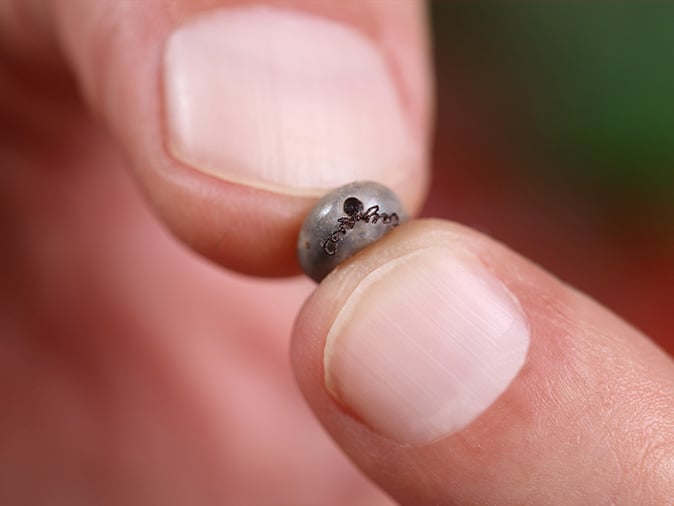Warmer Than Usual Fall Could Lead To Increased Tick Activity
Fall officially began on September 22, 2024, and while the leaves are changing in the mountains, summer temperatures are sticking around. According to the NPMA, which releases its Bug Barometer, forecasting fall and winter pest activity, warmer-than-usual temperatures can increase tick activity in Colorado. In today’s blog, we’ll discuss the risks associated with these biting pests and share a few tick prevention tips.

Fall pest forecast for Colorado
Unless you’re a huge fan of cold and snow, you might be happy to hear that warmer weather will hang around a little longer than usual. While that’s great news for most of us, it does have its drawbacks. We’re referring to ticks, of course. If we continue our current track, warm temperatures will have a significant impact on tick populations. Here are a few reasons why:
- Ticks are cold-blooded animals. This means that they are unable to maintain a steady body temperature. For this reason, they are impacted by rising or declining temperatures. When temperatures go up, they are more active. When temperatures go down, they slow down or go into dormancy.
- Female ticks attach to warm-blooded animals (and people) to get a blood meal, which provides the nutrients and energy necessary for reproduction. After feeding, they’ll mate and then find a safe place to lay eggs. Depending on the weather, tick eggs may remain dormant through the winter, hatching in the spring when temperatures warm up and conditions are more favorable. If conditions are milder, tick eggs may hatch during the fall or winter.
- The longer the warm temperatures persist, the higher the tick population will become. Ticks will have more time to increase their populations before the cold weather forces them to slow down and go into dormancy.
As we hinted above, people are often the source of a blood meal for ticks. Unfortunately, a longer tick season means more opportunities for tick bites. Let's look at what this means for us.
Tick-borne diseases in Colorado
It isn't good to have a tick bite you in any state, but how bad is it in Colorado? Ticks in our state are known to spread some diseases that are certainly unpleasant, but one disease is noticeably absent from the list. Lyme disease is rare to non-existent in Colorado. This is because Lyme disease is not present in local animal populations where ticks can pick it up. However, here are a few tick-borne diseases that are a problem for us:
- Colorado tick fever
This viral infection has standard flu-like symptoms such as fever, headache, body aches, chills, and fatigue. Most people recover without medical attention. - Tick-borne relapsing fever
This bacterial infection is most often transmitted by soft-bodied ticks, which are commonly carried by rodents. While it is certainly unpleasant (like getting the flu), it is not considered a medical concern. - Tularemia
This is another bacterial disease that is spread by ticks in Colorado. Once again, flu-like symptoms are the result of the infection. You'll likely also experience swollen lymph glands and skin ulcers along with these symptoms. The incidence of this disease is quite low. - Rocky Mountain spotted fever
This disease is potentially serious and can become life-threatening if not treated properly. Fortunately, it is relatively rare in Colorado.
While tick-borne diseases in Colorado aren't as severe as in many other states, the risk is still present. It is always best to take precautions when
What are the common tick pests in Colorado?
The three most common ticks we have in our area are Rock Mountain wood ticks, American dog ticks, and brown dog ticks. As you can imagine, dog owners have more trouble with ticks. Here are a few quick facts you should know about each:
- Rocky Mountain wood ticks
This is the most common tick species in our service area. It is found in tall grass, fields, and wooded areas. It is associated with Colorado tick fever and Rocky Mountain spotted fever. - American dog ticks
This tick species is found in fields and the edges of wooded areas. You'll likely pick these ticks up along walkways and paths. While they can get inside structures, they cannot complete their life cycle indoors. The American dog tick is associated with Rocky Mountain spotted fever and tularemia. - Brown dog ticks
This tick species is like the American dog tick but far more frustrating. It is a common problem in kennels and in homes with dogs. Fortunately, disease transmission is low.
Now that you know what you're up against, what can you do about these ticks? Let's look at tick bite prevention.
Tips to help you prevent tick bites when outdoors
When you take your dog for a walk or head out for a hike, use personal protection to prevent tick bites. Here are a few simple tips:
- Avoid walking through tall grass.
- Wear pants tucked into socks and long-sleeved shirts when hiking or spending time in potential tick habitats.
- Wear light-colored clothing so you can see ticks climbing up.
- Use repellent on your feet and lower legs to keep ticks from climbing up onto you.
- Use a vet-recommended tick preventative for your dog.
Tick activity is higher than usual this fall. Simple steps like these can help you avoid tick bites.
Tips for preventing ticks in your yard
Your own yard may be a haven for ticks unless you take measures to make it a no-tick zone. Here are a few ways to reduce the chances of tick activity on your property:
- Install a fence to keep tick-carrying wildlife out and prevent your pets from leaving your yard for wooded areas.
- Keep your lawn trimmed until it slows down or stops growing.
- Remove leaves and other yard debris that ticks hide under.
- Cut back dense vegetation that abuts your lawn.
- Keep play equipment and outdoor furniture away from wooded areas on your property.
- Stack wood away from your home and up off the ground.
Sign up for seasonal tick control with EnviroPest
The best way to keep ticks off your property is to sign up for seasonal tick control with EnviroPest. Available in Denver, Boulder, Colorado Springs, Loveland, and throughout NoCo, our solution targets ticks AND mosquitoes!
Every month, from May through September, we’ll send a highly trained and fully licensed pest control specialist to your property to treat areas where these biting pests rest and breed. Although it’s impossible to eradicate either pest, our services drastically reduce their numbers, allowing Coloradoans to enjoy their outdoor living spaces while the weather is ideal.
Contact us today and get ahead of spring tick and mosquito activity. Or, if you've noticed other fall pests lurking about, find out how our home pest control services can help!

Testimonials
GETTING STARTED IS AS EASY AS 1-2-3
REQUEST FREE ESTIMATE
Pest Solutions For Homes & Businesses
We understand that pest problems can be unsettling and frustrating, but the solution shouldn't be. For over 55 years, we've been helping folks right here in Colorado take care of ants, spiders, mice, mosquitoes, wasps, bed bugs, bats and most other creepy crawly things. We'll get there fast to solve the issue quickly and affordably - Guaranteed.



